The C-Section Shelf: Does It Ever Go Away?
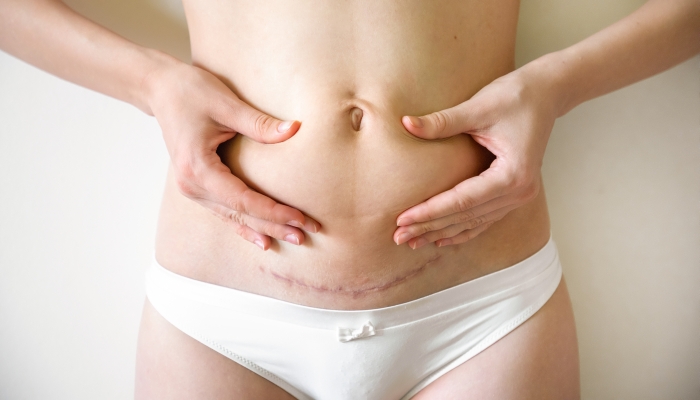
This post may contain affiliate links; please see our terms of use for details.
- A C-section shelf is an area of excess fat or skin that hangs over a C-section scar.
- C-section shelves can be improved with a healthy diet and exercise.
- Some severe scarring or extra skin may require a tummy tuck surgery.
- Less-invasive procedures like liposuction can be effective for moderate C-section shelves.
Bodies go through incredible changes during pregnancy and delivery. Your uterus grows from about 7cm across to the size of a watermelon and then shrinks back to normal about 8 weeks after delivery. Hormones also go through major changes, and even your bones can change. Going through all of these changes and recovering is a lot of work.
While the hope is that everyone can accept their changing body and love themselves, women still want to look and feel their best after pregnancy. Many have questions about how they can get back to feeling like themselves again with their postpartum body. One of the most common questions is about the C-section shelf: Does it ever go away?
What’s a C-section Shelf?
A C-section shelf is extra skin and fat that hangs over a C-section scar. A C-section is a major abdominal surgery that will leave a scar on your abdomen. When you have a C-section delivery, you’ll need to be prepared to take care of a surgical incision in addition to your new baby.
As your incision heals, your body creates scar tissue where regular skin used to be. Even after you fully recover, this scar tissue acts differently than skin and fat tissue, and a C-section pooch can form.
Many women feel very self-conscious about their postpartum body, and postpartum depression, along with societal pressure to lose weight after giving birth, makes this feeling worse. While being pregnant is amazing, and a mom giving birth is absolutely incredible, a C-section shelf is an unwelcome side effect that most women would rather be without.
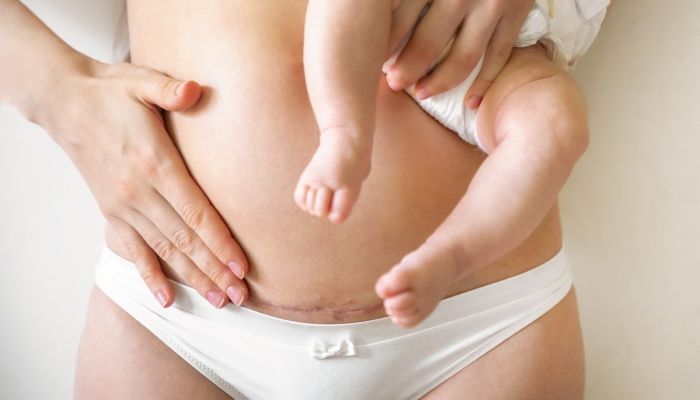
What Causes a C-section Shelf?
Even women with washboard abs and a flat stomach before pregnancy can end up with a C-section shelf. A C-section scar is an unavoidable part of C-section delivery, and C-section overhang can happen to anyone.
Scar Tissue
The main culprit of a C-section shelf is scar tissue from a C-section incision site. After your doctor makes an incision in your abdomen to deliver your baby, she will close the wound with staples, glue, or scissors. This will hold the incision closed while your body goes through the stages of healing. The scar tissue that forms is less elastic than the surrounding skin, and it can adhere to the abdominal wall. This scar tissue can act like a belt when it is pulled tight over a billowy dress, where the fabric above and below the tightened belt sticks out. A smaller C-section scar will cause less C-section pooch.
Fat tissue
Even a woman with a fairly flat stomach can end up with a C-section overhang. It is normal and healthy to have some fat tissue around the tummy area. Healthy women have a body fat percentage of around 20%. However, the more excess fat tissue you have surrounding your scars, the more prominent the appearance of your shelf will be.
Loose Skin
Loose skin is another cause of a C-section pooch, and it cannot be exercised away. During pregnancy and as your belly grows, your skin stretches to make room for your baby. After delivery, it is common to have excess skin around your belly. Your skin can take a long time to return to its pre-pregnancy size, and especially for mothers of multiples, your skin may never return to exactly how it once was.
Will a C-section Shelf Ever Go Away?
When looking at your C-section shelf in the mirror, the first step is to remember that you are not alone. Give yourself some grace and remember that the changes you went through did not happen overnight. Your recovery will not happen overnight either. After you have shown yourself some love, there are strategies you can use to make your C-section shelf less prominent and get looking and feeling your best.
For some women, a C-section shelf requires surgery to go away completely. Exercising regularly and maintaining a healthy diet can help to get rid of a shelf caused by extra fat, but plastic surgery will be needed to remove excess skin.
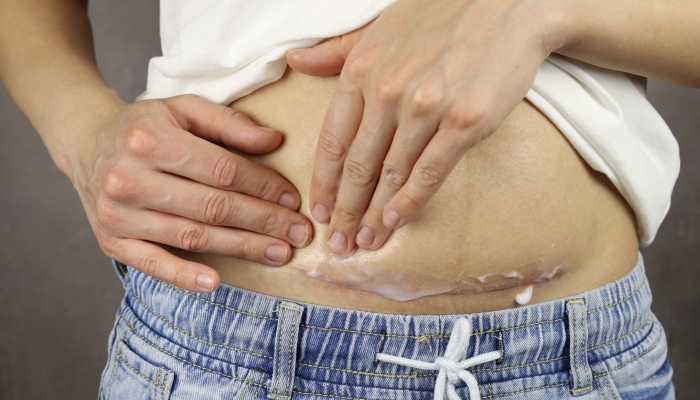
Ways to Reduce C-section Shelf
If you are feeling self-conscious about your appearance, there are some things you can do to tighten your tummy after having kids and make your C-section shelf less prominent.
Diet
The best thing you can do for your body, your skin, and your C-section shelf is to focus on your diet. If you feel like excess fat is the problem, a good goal is to aim for 1-2 pounds of weight loss each week. You can do this by eliminating sugary drinks and adding more fruits and vegetables to your diet.
If you are breastfeeding, you’ll burn off a few hundred extra calories a day that can help with weight loss. Make sure to drink lots of water, especially while you breastfeed.
Eating a diet rich in vitamin C and protein can help your skin heal and reduce the appearance of your C-section scar.
Exercise
Not only is exercising regularly a great way to tone your midsection, but it is also great for your mental health. Working up a good sweat each day can help you feel more confident, whether or not you have a C-section pooch. Exercise helps you get rid of excess fat and build muscle, both of which improve the appearance of your belly.
Massage
C-section scar massage can help promote blood flow to the area and break up scar tissue. If you can consistently massage your C-section scar throughout your recovery, you may be able to prevent some C-section overhang.
Abdominal Binder
- POSTPARTUM RECOVERY SUPPORT: This postpartum belly band offers targeted support for your belly, waist, and hips. With the Power Compress Core, our post partum waist binder promote mobility, provide core muscle support and ease postpartum back pain
- CORE STRENGTHENING COMFORT: Our belly binder post partum strengthen core muscles weakened during pregnancy. This c section belly binder facilitates a quicker return to daily activities, while maintaining comfort and security
- CONFIDENT BREASTFEEDING: An abdominal binder postpartum that encourage better posture, crucial during breastfeeding, with 360 degrees of compression, our postpartum belly binder make you feel supported and confident throughout your postpartum journey
- LONG-TERM COMFORT ASSURANCE: Enjoy long-lasting effectiveness beyond the initial 6-10 weeks post-delivery, as many women find continued benefits from wearing our belly wrap postpartum, enhancing comfort and confidence
An abdominal binder can help support your abdomen during the healing process. For the first few weeks after your C-section, a belly binder can keep your incision from reopening. After completing the healing process, a belly binder won’t do much for a C-section pooch. However, wearing supportive undergarments or shapewear can reduce its appearance underneath clothing.
Surgical Procedures to Remove a C-section Shelf
Even the best exercise and diet regimen may fail to eliminate your C-section pooch. If that’s the case, there are surgical options that you can consider.
Tummy Tuck
A tummy tuck is a surgical procedure that involves cutting away excess fat and skin near your belly button. Some surgeons are even able to cut away your entire C-section scar, leaving a smaller, barely visible scar in its place. During plastic surgery, your doctor may be able to remove stretch marks in addition to extra fat and skin.
Recovery from a tummy tuck is similar to recovery from a C-section. After your surgery, you’ll need about 6 weeks to let your body heal. You’ll need to avoid heavy lifting and wear an abdominal binder to support the abdomen.
Liposuction
Liposuction is less expensive and less invasive than a tummy tuck. Moms who have extra fat tissue may benefit from getting liposuction, but it will not completely eliminate your C-section pooch. Liposuction only gets rid of fat, it does not do anything for extra skin or break up any scar tissue.
FAQs
On average, how much will you have to pay for a tummy tuck surgery?
The cost of a tummy tuck is somewhere around $15,000. This includes anesthesia, the surgical suite and staff, the surgeon, and recovery medicines. Some centers will bundle a tummy tuck with liposuction for a discounted rate.
When can you start exercising after a C-section?
Most physicians agree that you can start walking as soon as you are home from the hospital. Taking easy walks around the block is great for recovery and for your mental health. You can start adding in more intensity and heavier weights about 6-8 weeks postpartum, after you get clearance from your doctor.
Do belly binders help with a C-section shelf?
Belly binders will help with the healing process immediately following a C-section or tummy tuck. This can prevent your wound from opening back up, making your C-section scar worse. Once your incision has healed, a belly binder won’t do very much for your shelf.
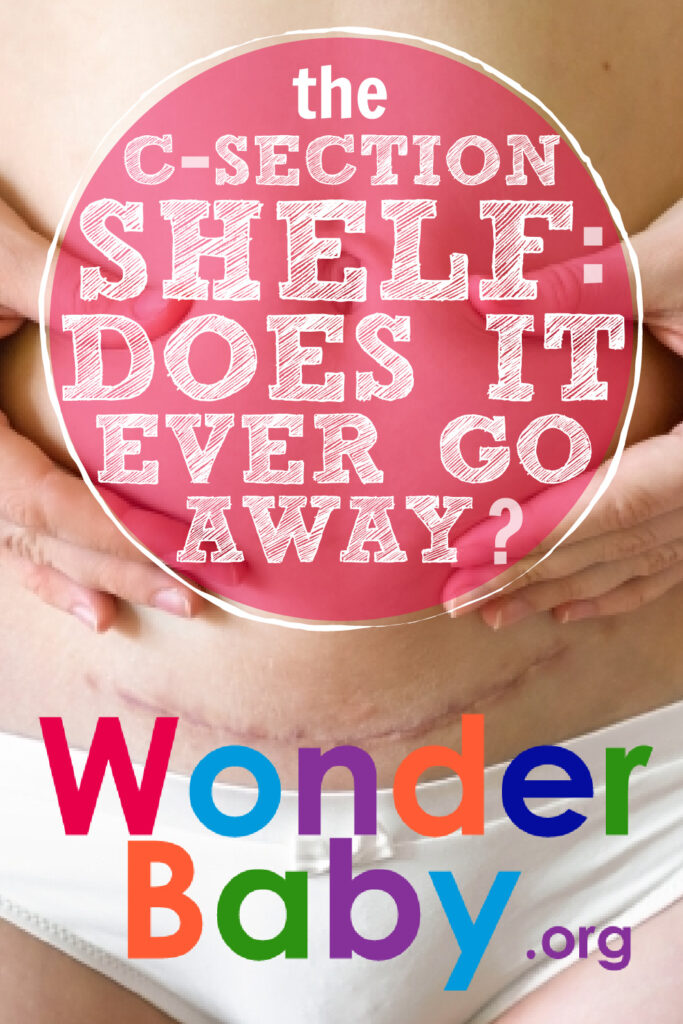
The information WonderBaby provides is not intended to be, and does not constitute, medical or other health advice or diagnosis and should not be used as such. Always consult with a qualified medical professional about your specific circumstances.
Related Posts
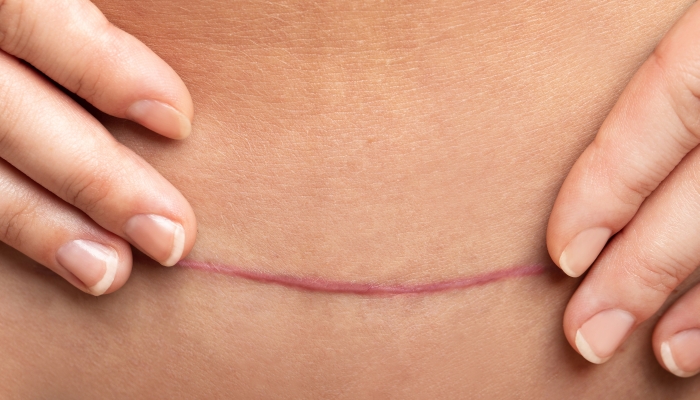
Pregnancy
How To Deal With an Ingrown Hair on a C-Section Scar
Ingrown hairs on a C-section scar can be treated using a warm compress or mild exfoliation. Infected ingrown hairs may require antibiotic treatment.

Pregnancy
What’s a Dye Stealer Pregnancy Test?
A dye stealer pregnancy test usually means that your hCG levels are very high, which is typically considered a good sign for pregnancy.
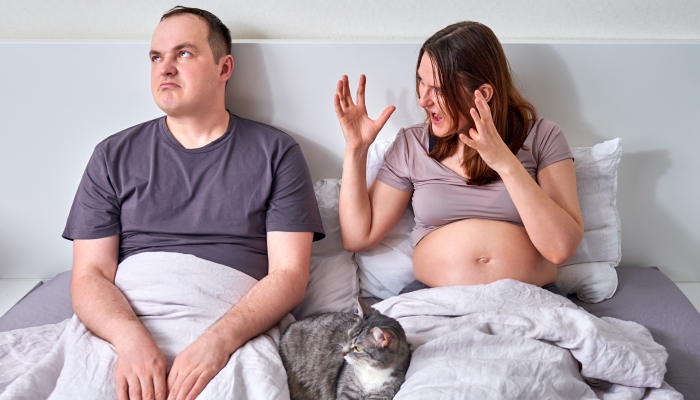
Pregnancy
Can Yelling Cause a Miscarriage?
Yelling alone can not cause a miscarriage. However, maternal stress can cause high blood pressure, preterm labor, and other health problems.
